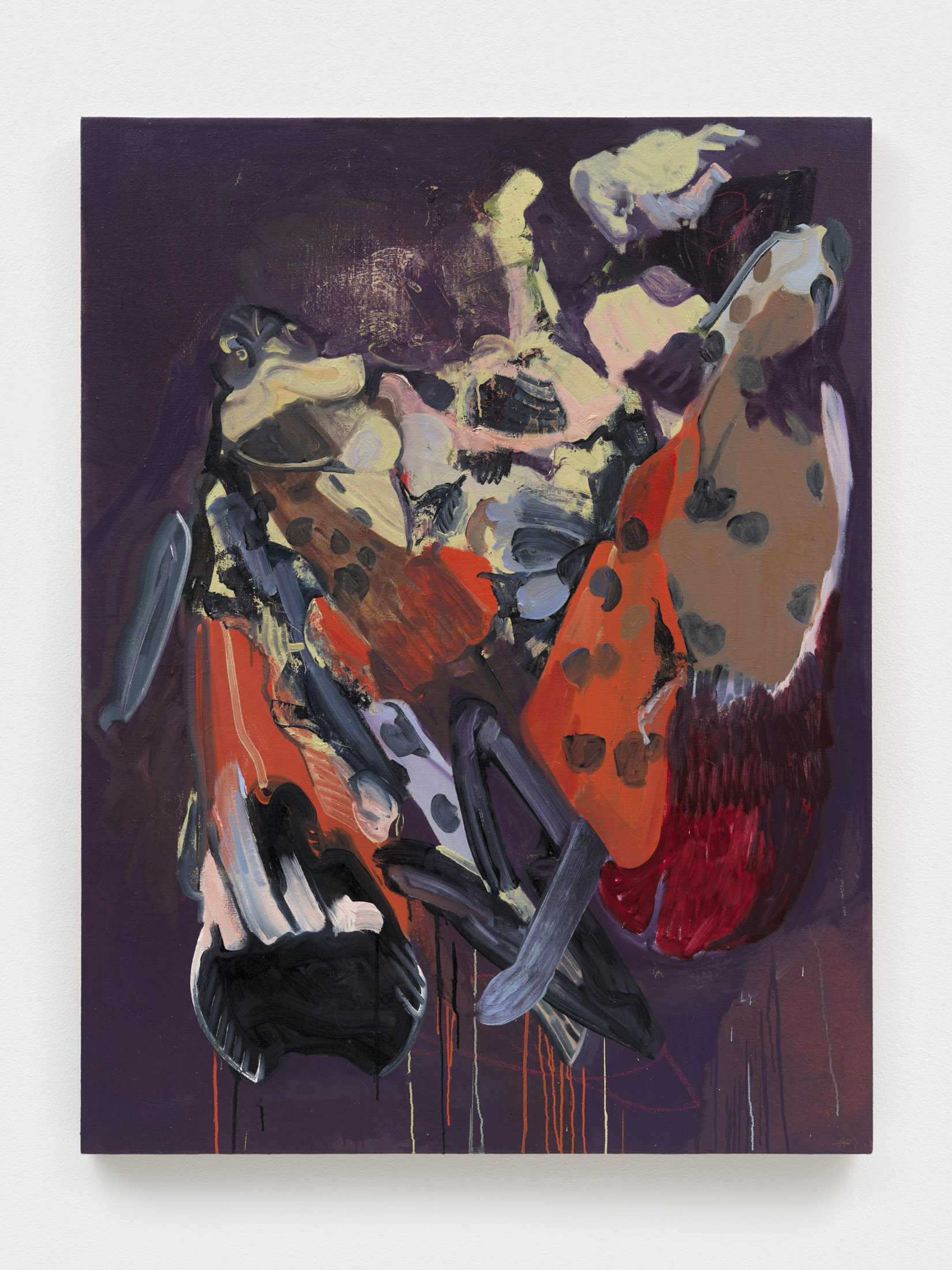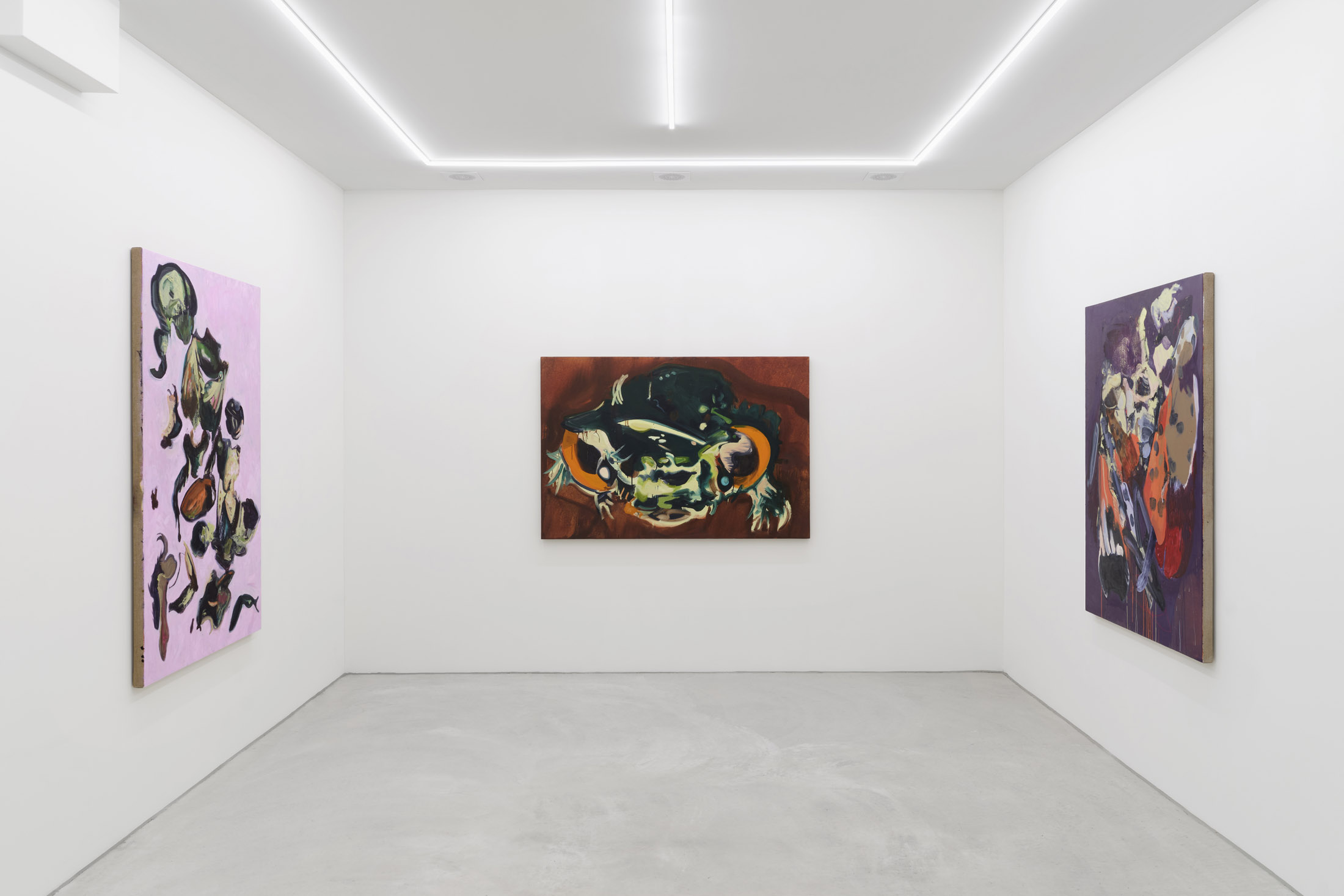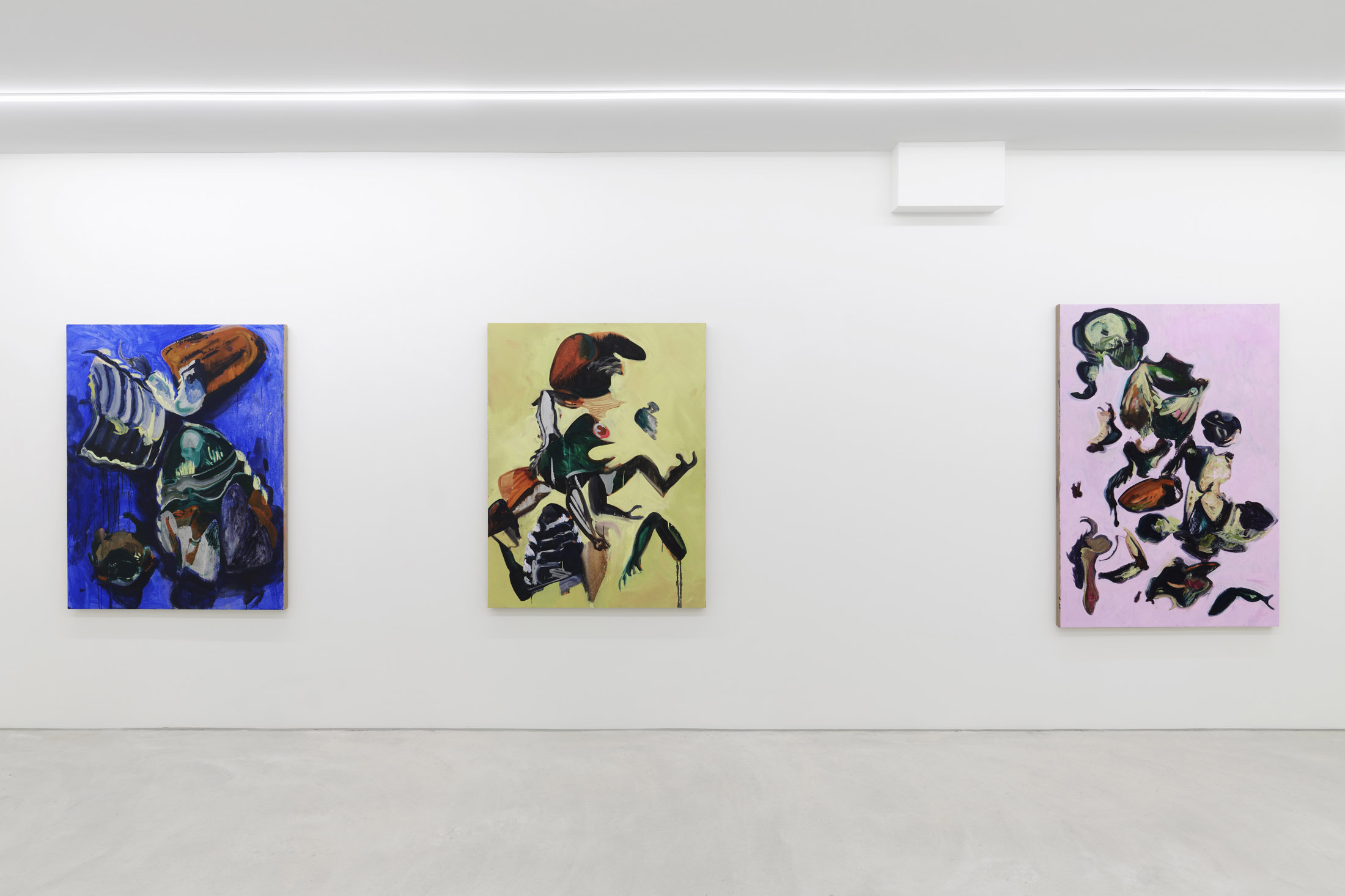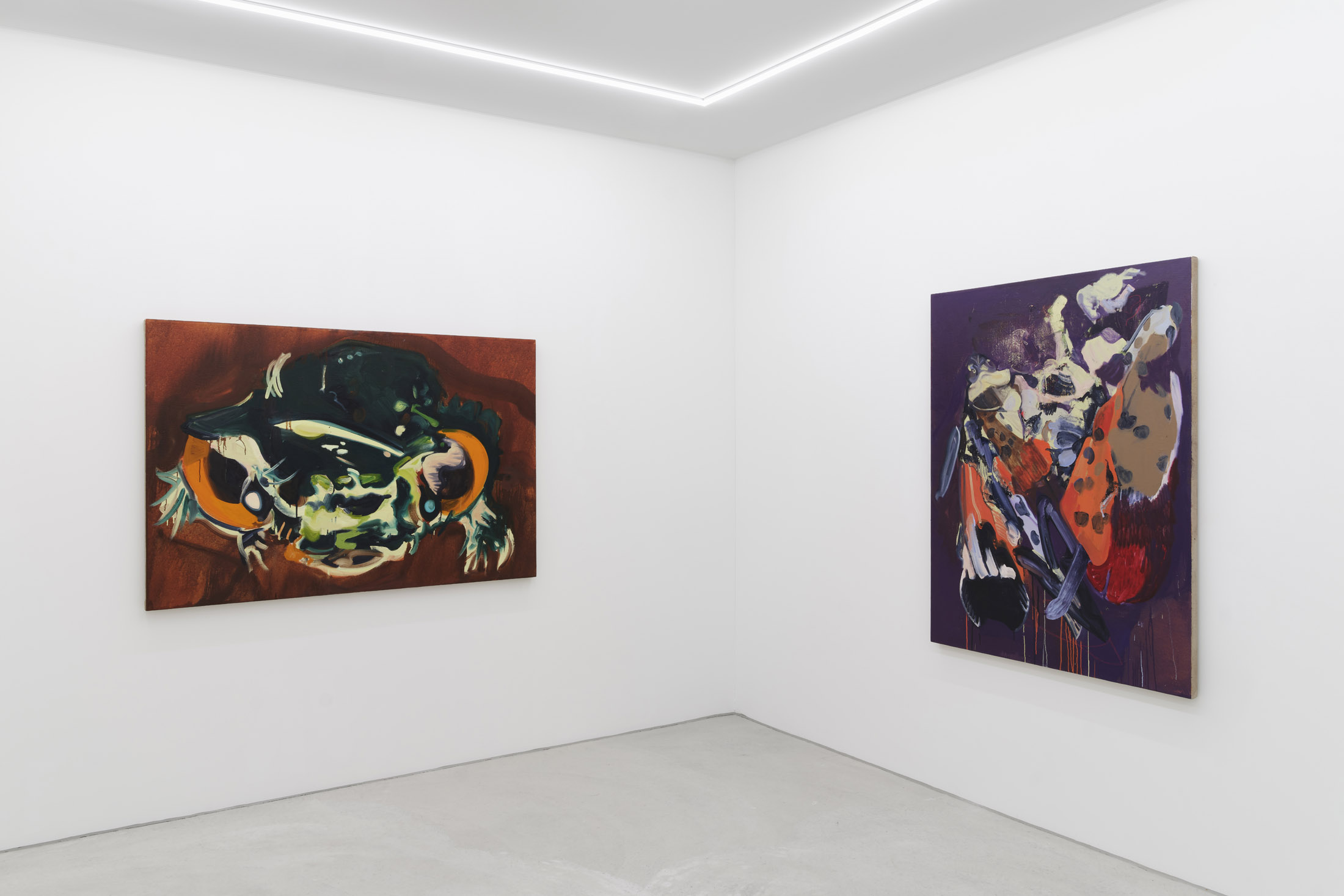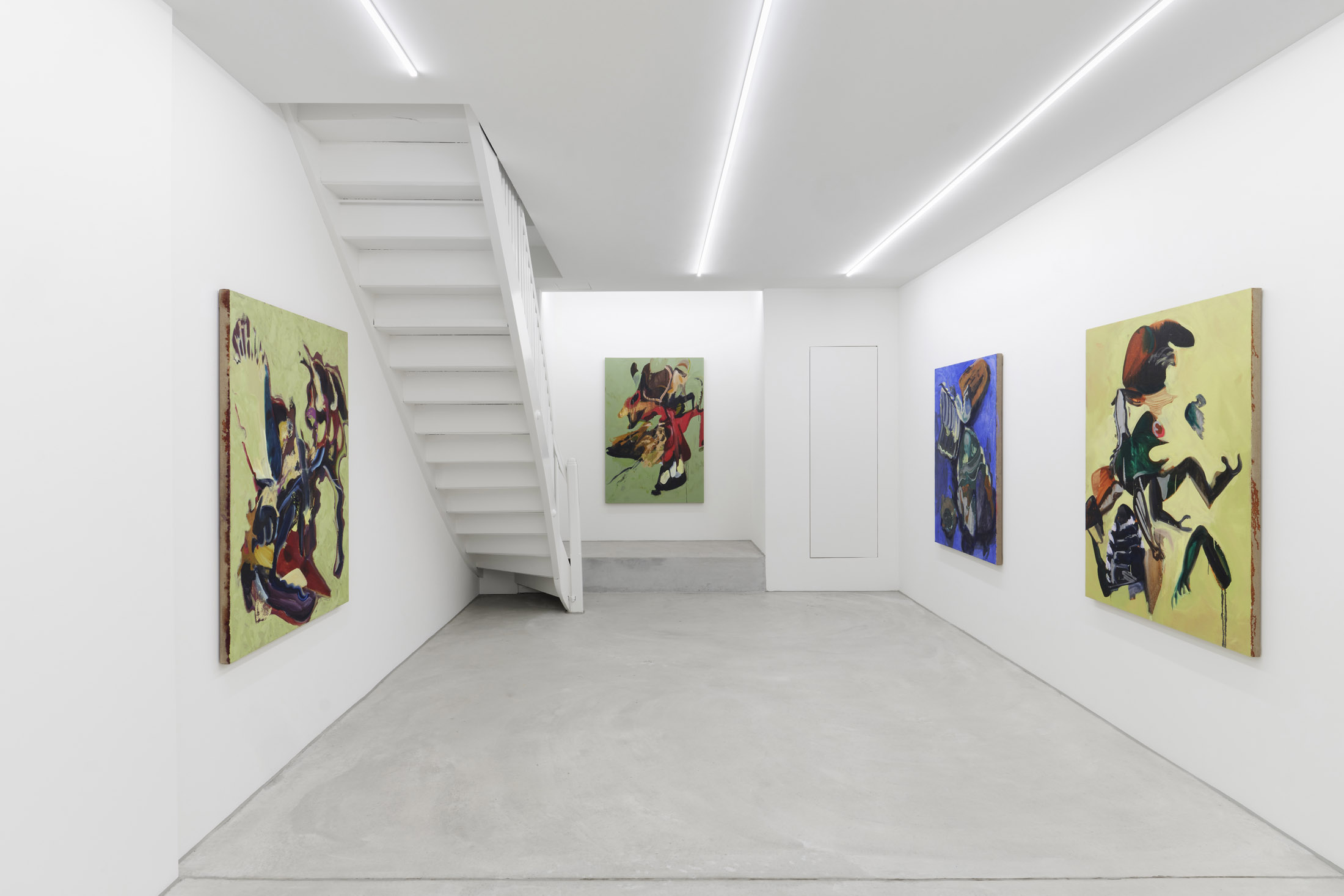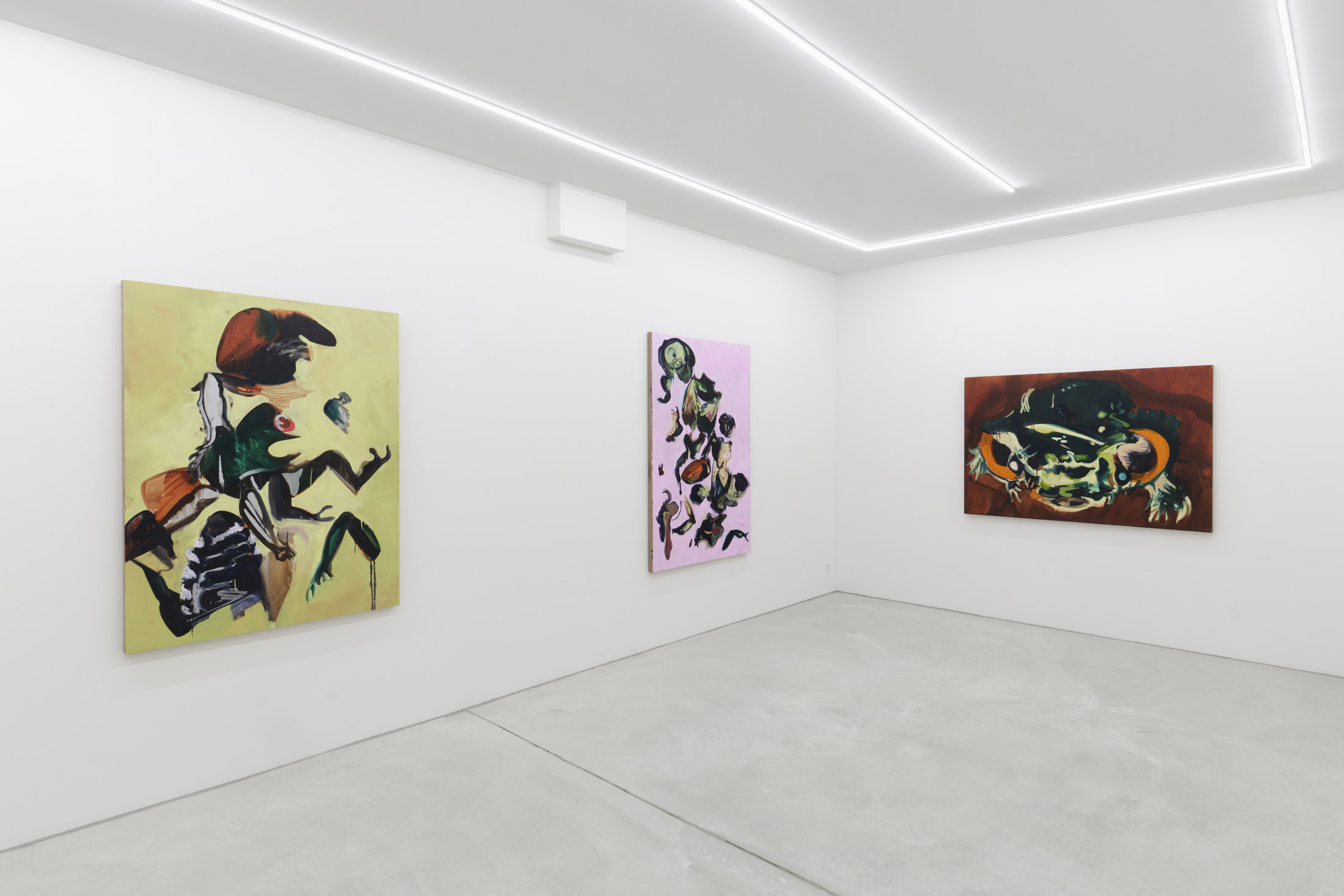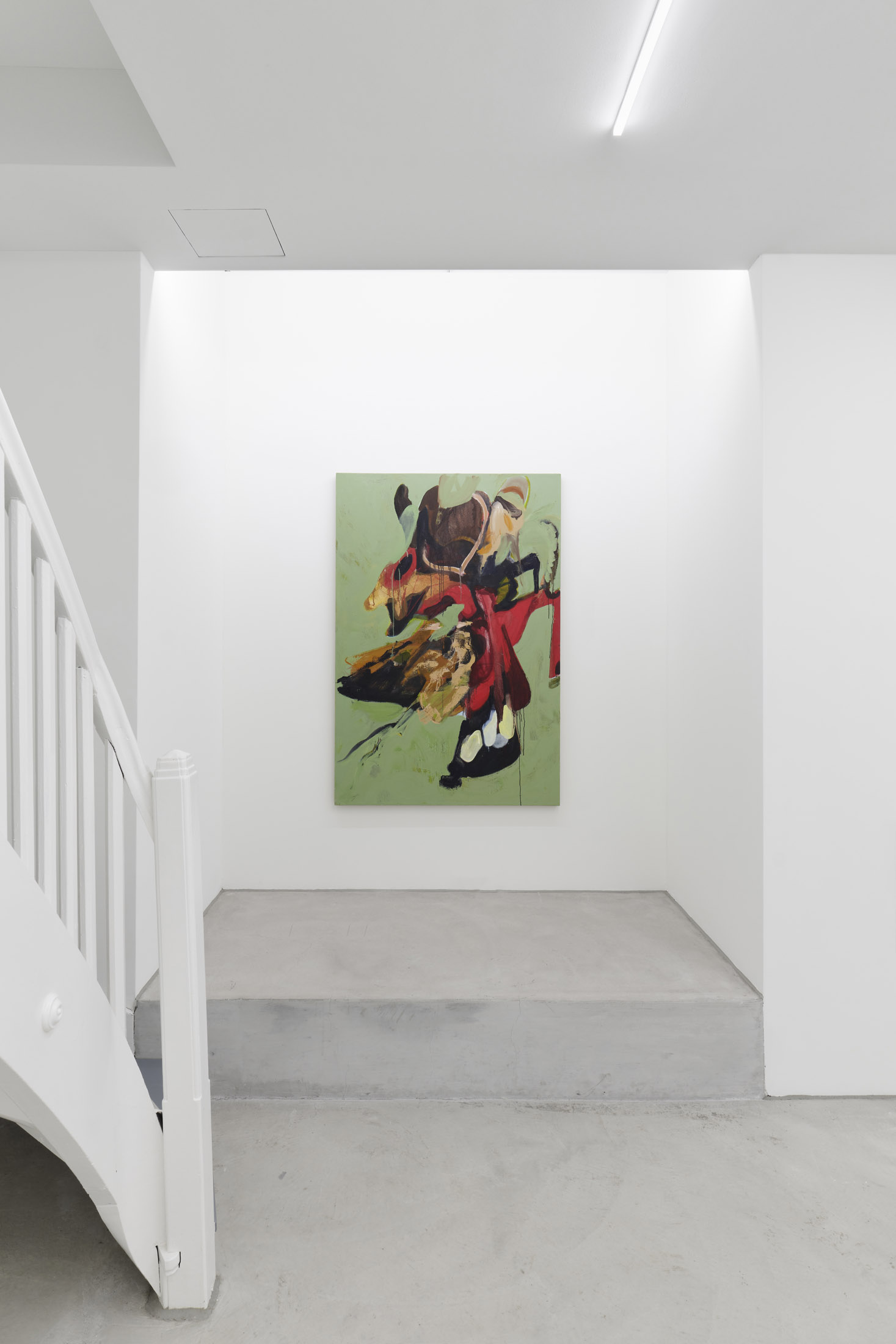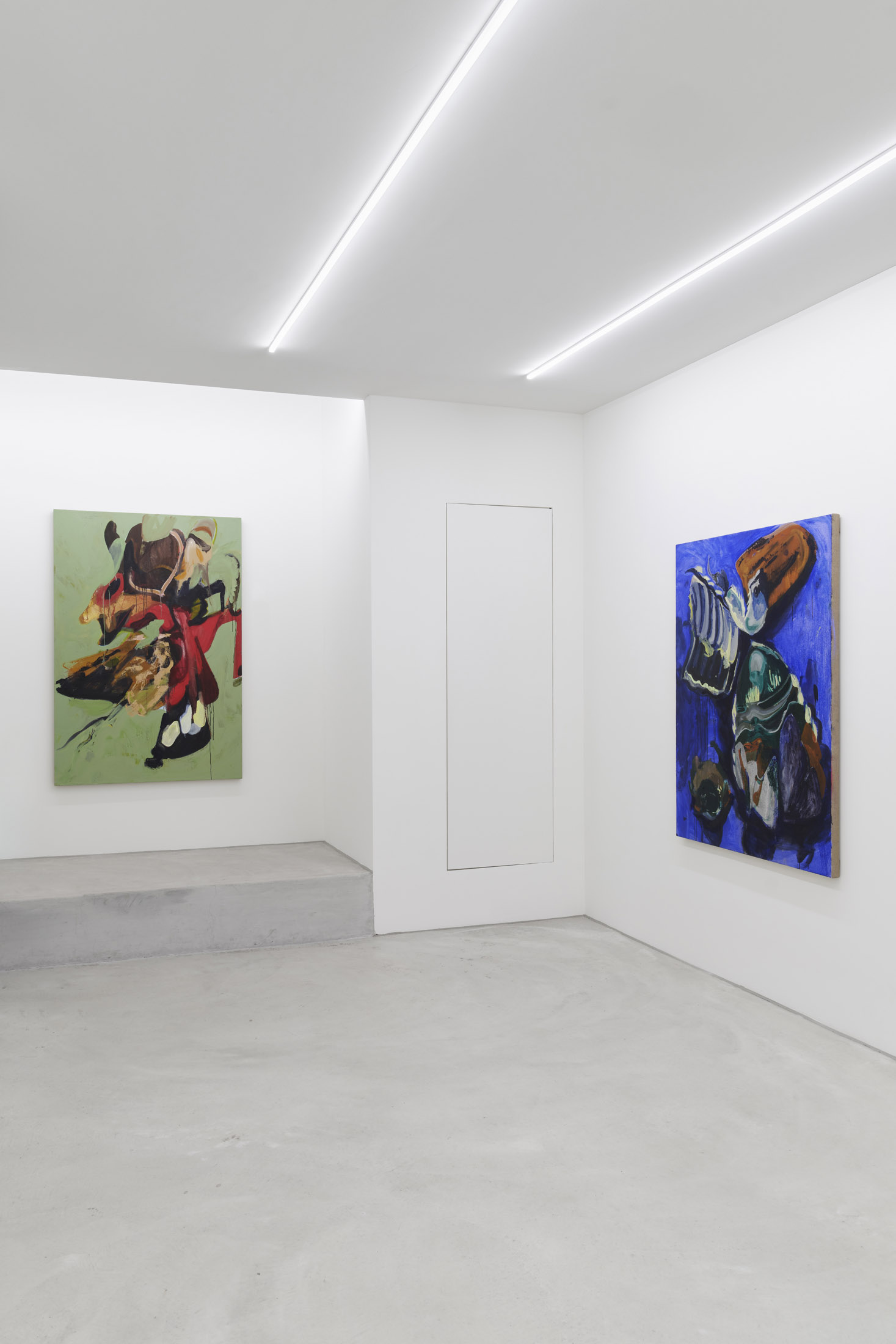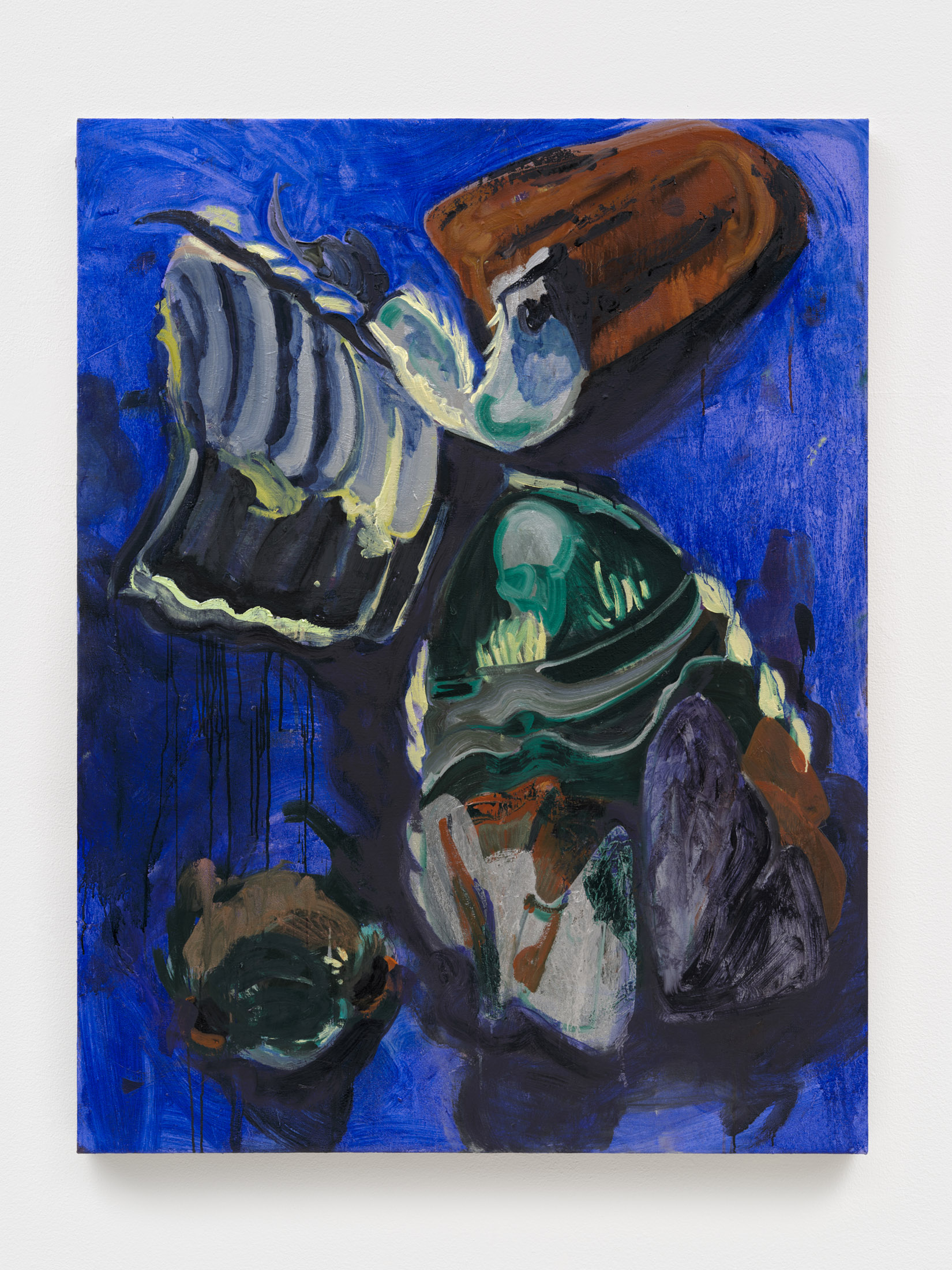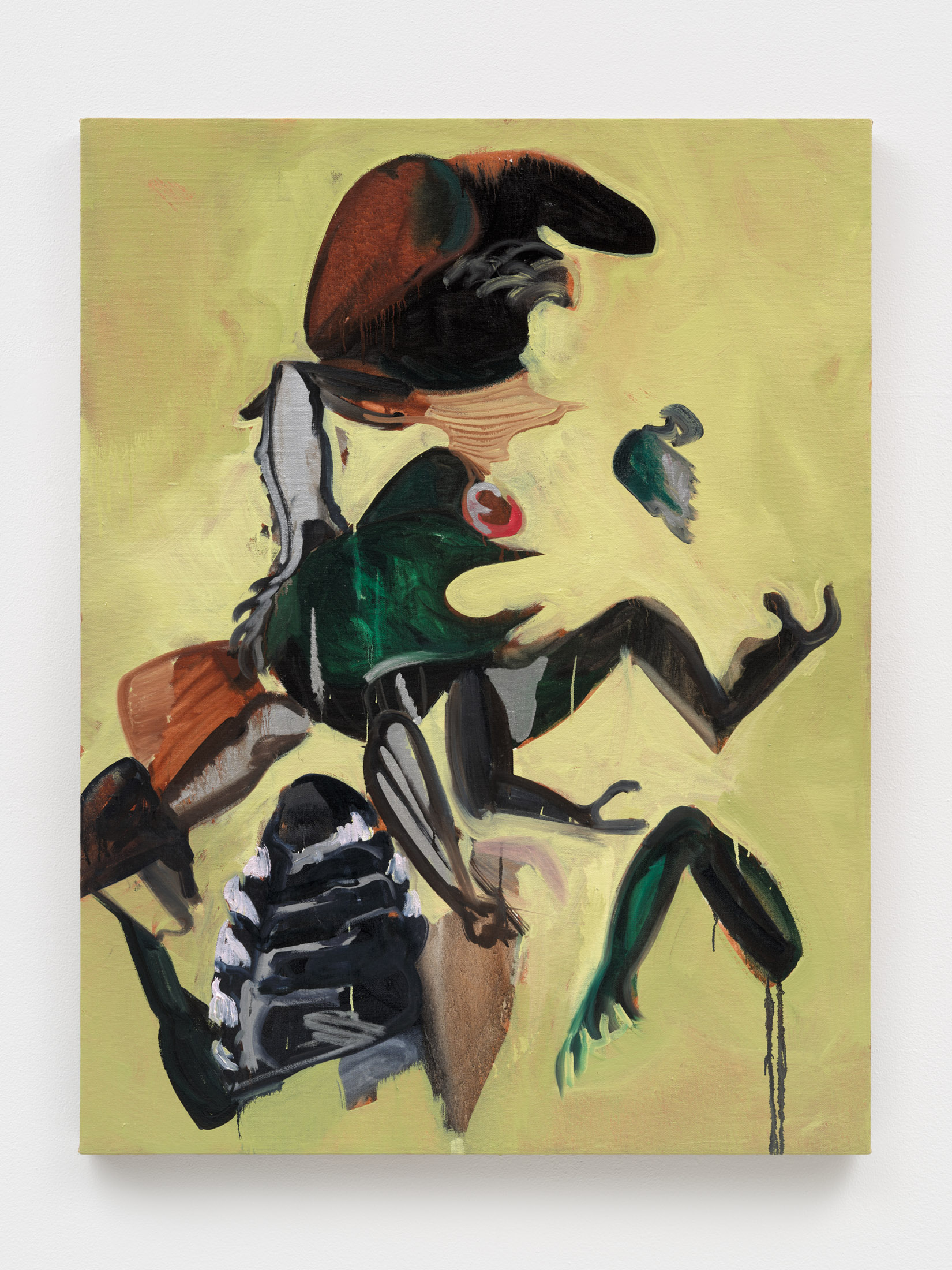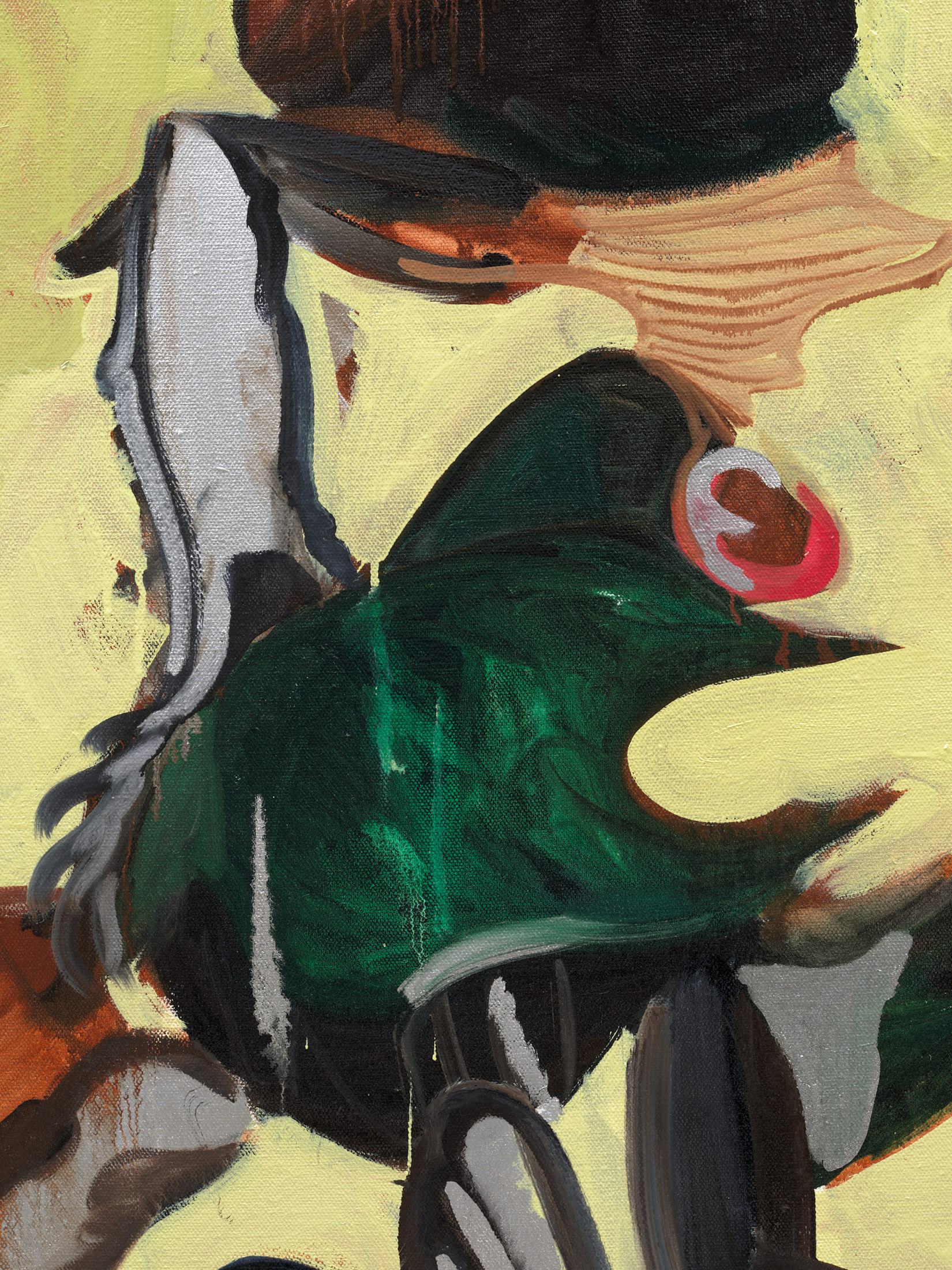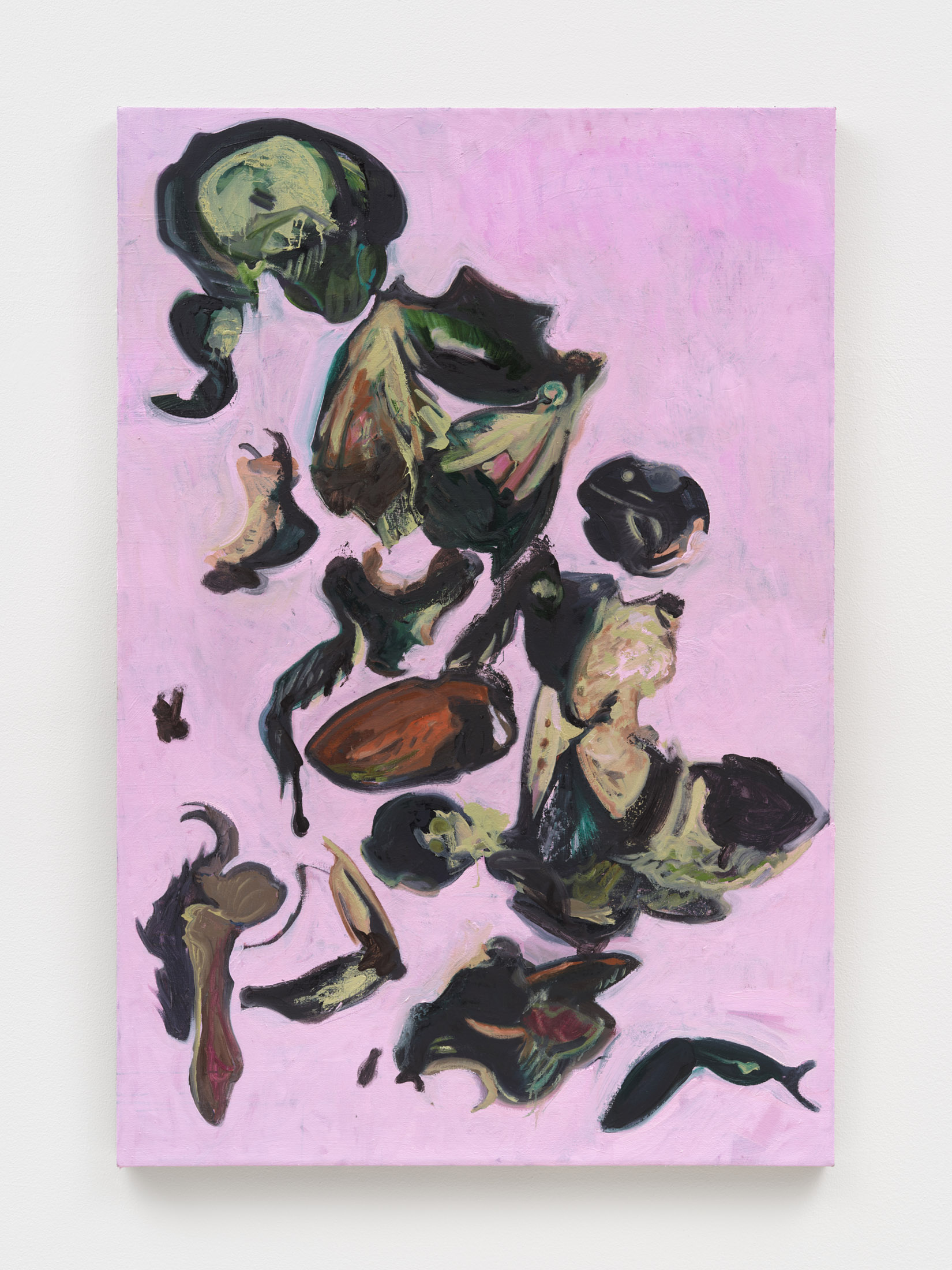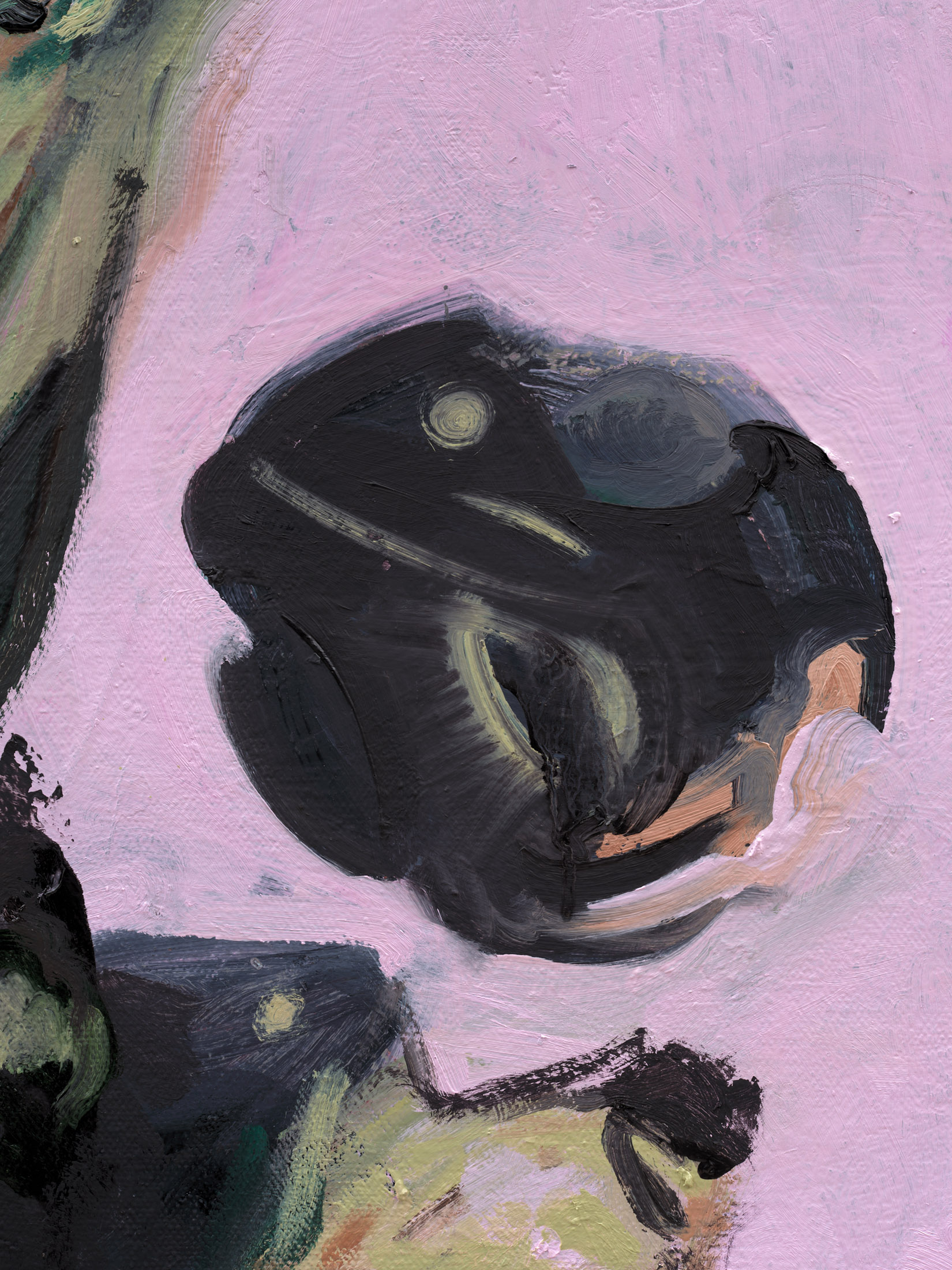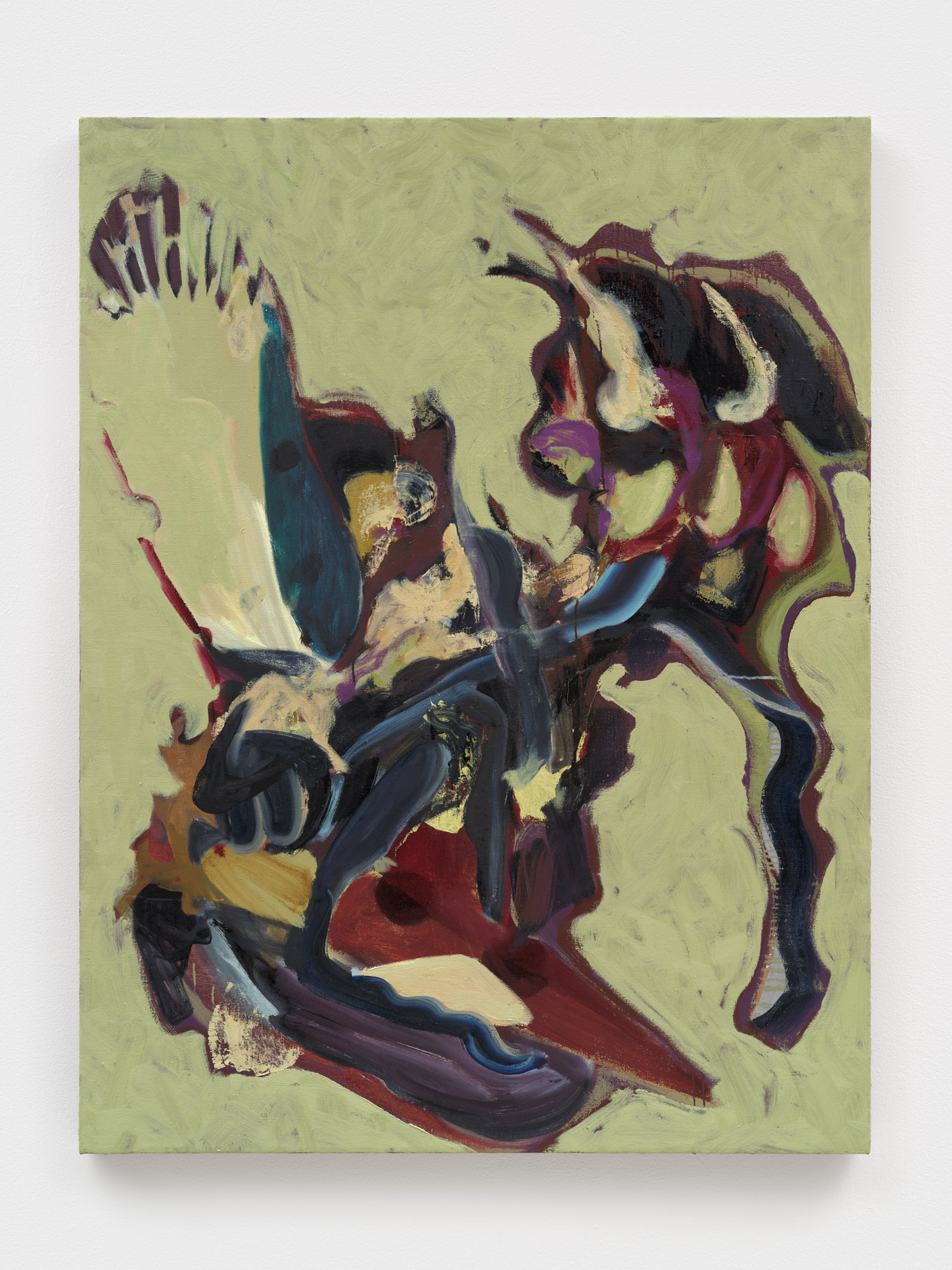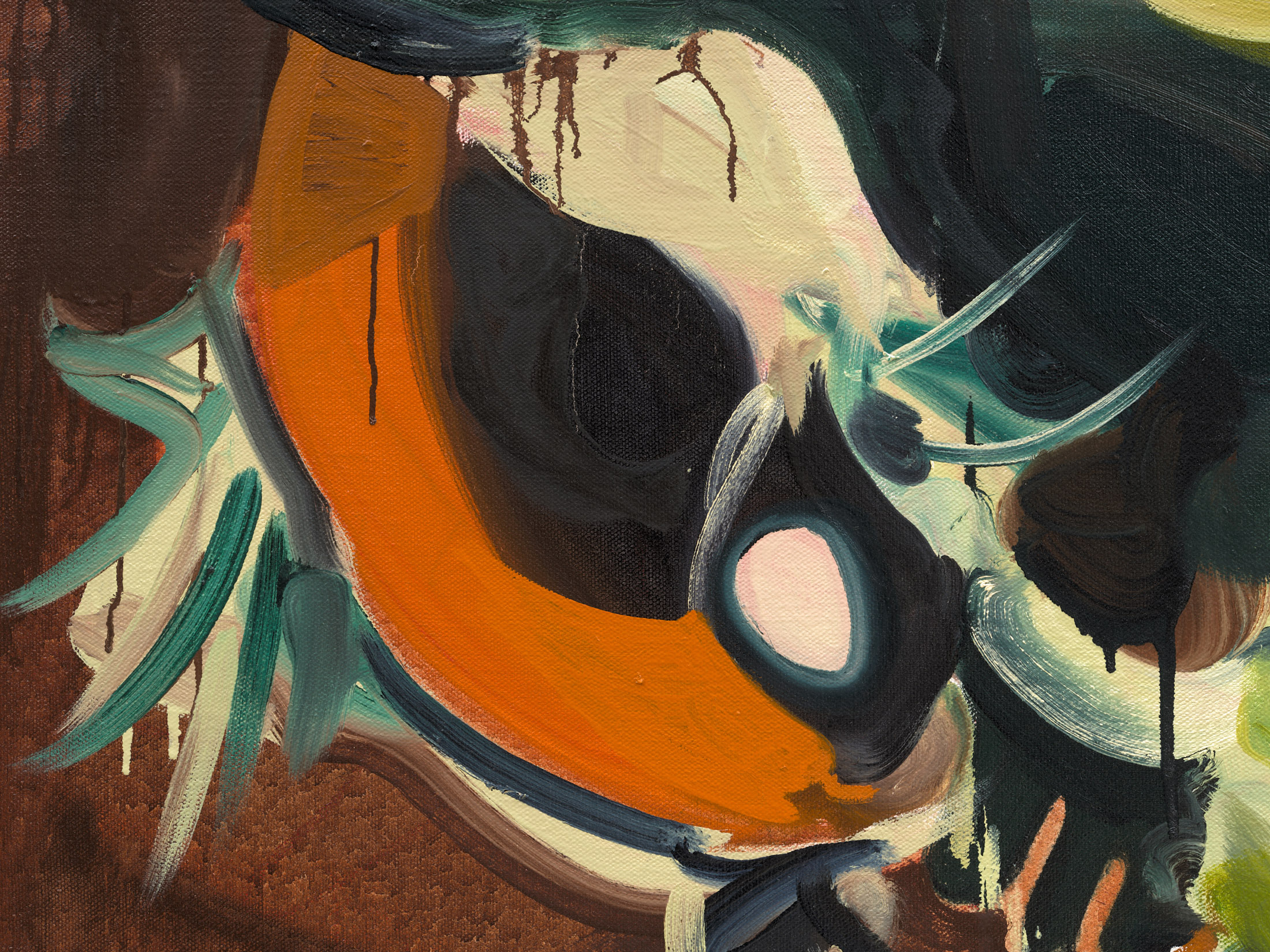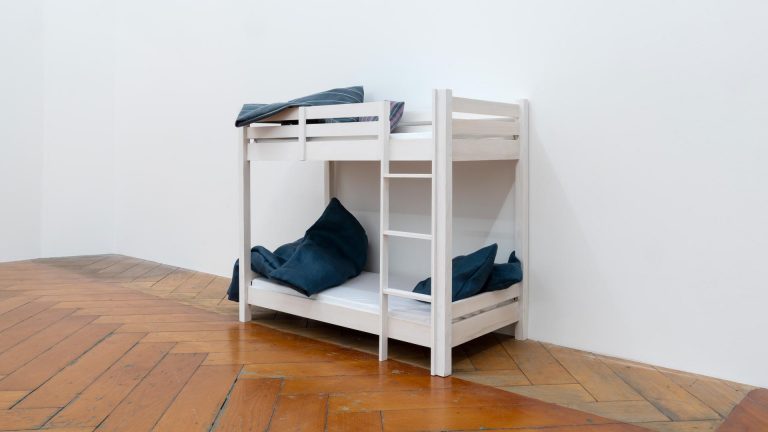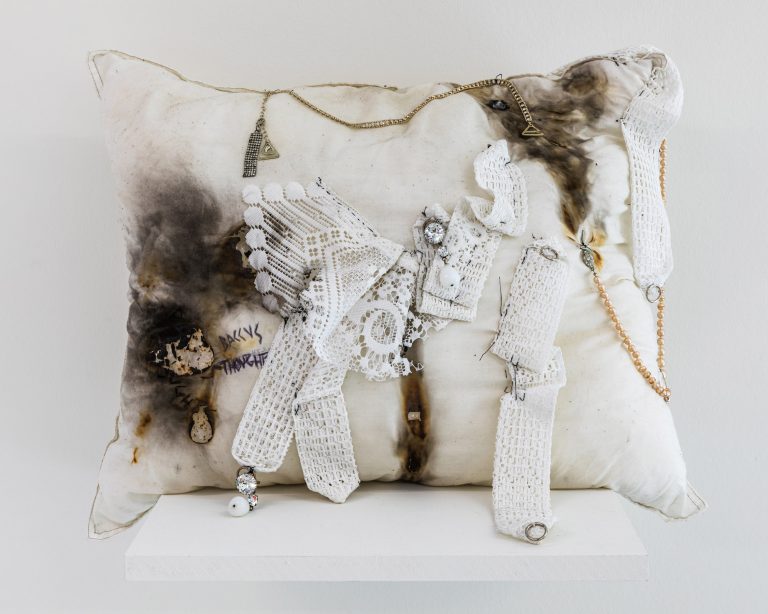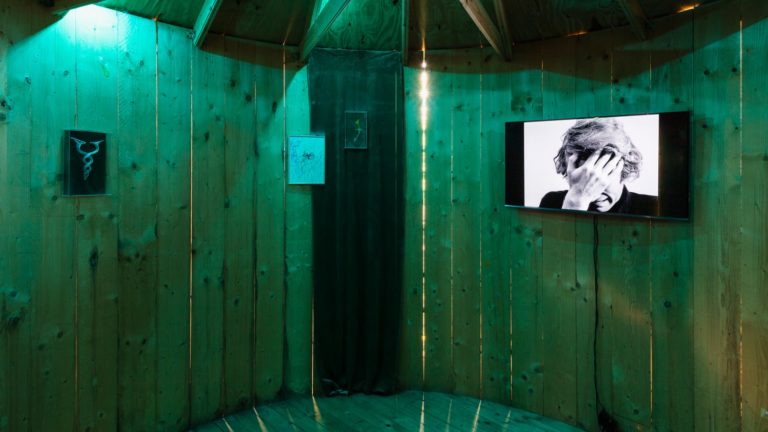Artist: Emma Mcmillan
Exhibition title: Haruspex
Venue: PHILIPPZOLLINGER, Zürich, Switzerland
Date: February 3 – March 16, 2024
Photography: all images copyright and courtesy of the artist and PHILIPPZOLLINGER, Zürich
Before Christianity became the dominant religion of Rome, among the many pagan rituals that governed that time was haruspicy, a form of divination that sought answers in the entrails of sacrificed animals. The diviner, or haruspex, would foretell the future and commune with the gods by reading details encoded in organs of the dead.
In Emma’s latest body of work, the augury of these paintings is not divination per se, but rather a meditation on visions, an entry point into foreign worlds. Reveries of divinatory quality are echoed in technique, with stochastic mark-making following a seemingly random push and pull like the promptings of an ouija board. Brush strokes act out the gamble of a dice roll, a rhythm eventually revealing patterns in seeing, a consultation that opens pathways. In this convolution, crevices fold in on themselves and umbrella-expand again into greater space. What begins as intimate becomes the outside. A gesture feels lurid, a detail totemic. Recalling further divination are the colors themselves, hazy like the murkiness of sight falling into slumber. These colors are of a sleepy earth, eliciting memories of moments pre-dawn and post sunset, the decadent feeling of wine red and lavender smoke.
When you squash a bug, everything is revealed. The totality of its existence is laid out in front of you. It’s repulsive, but unlike with a higher mammal, or God forbid, a human, it’s a sight that’s easier to understand, simpler to take in. As visual form, it becomes a brute relic of mortality. In the abstract nature of its decomposition, one might even find a bit of beauty.
In New York City there was a call for death when the invasion of the Lantern Fly began, a state-sponsored rallying cry, culturally sanctioned. We were tasked with finding the invaders and destroying them. Emma didn’t take this seriously at first, but on a random walk down the street she became aware of their presence and saw that the onslaught was underway. Her first impulse was not to kill them. Emma just took in the novelty of their form, soaked up what was foreign about their appearance, a misty mauve color she hadn’t seen before, a subtle pattern on their wings new to her eyes. But soon their numbers kept piling up, and the novelty faded into a realization that they indeed were pests. Their presence registered as an imbalance, an off-kilter omen of discord in our environment. Emma soon took part in the violence, allowing herself some enjoyment in the hunt, the casual brutality, and she began to squash them underfoot whenever the opportunity arose.
At one-point last summer, Emma turned a corner and saw so many she was overwhelmed by their numbers; it seemed pointless to fight them, and that day she chose to avoid them rather than face them head-on. The pestilence had won, and Emma just shook her head and carried on. Emma had developed a feeling of repugnance to the whole affair. Like so many things it was beyond her control, just another facet of our changing world we had to accept.
It was during this plague that Emma began seeing the lantern flies as something to study, and she began keeping their corpses, photographing them, drawing them, painting pictures of them. She started to see in their proliferation and death a vehicle for larger meaning, crushed corpses opening into unfamiliar visions. The chaotic nature of their fractured bodies inspired jumbles of aberrant compositions, the subsequent forms she discovered were then collaged together in unfamiliar discord, repeating the pattern of decomposition anew.
Once the paintings proper were underway, mark making was used as a record of gravity, whereas the animal, when alive, often elided this law of nature. Brushstrokes fall to the earth, drips sputter and spill like erupting organs. The temporality of the painting is always present, an eternal stasis. Perhaps these animals didn’t go anywhere in death, they just became portals, an open door to enter. The natural world often uses death this way, as an entry point to a fresh beginning. By rendering obsolescence into doorways, pathways and vistas, Emma uses the ending in mortality as an opening. Each painting becomes a record of journey, a world explored, a burgeoning vista to behold. One is reminded of the kaleidoscopes we played with as children, where the myriad number of patterns held in one’s hands was endless, a universe of shapes and flashes, a world revealed in miniature.
Text by Sven Lovén
Emma McMillan was born 1989, in Atlanta, Georgia. She lives and works in New York City. In 2012, she completed her studies at Cooper Union, New York. Recent solo exhibitions include at Sebastian Gladstone (Los Angeles, 2024); PHILIPPZOLLINGER ( 2024); Paul Rudolph Heritage Foundation (New York, 2021); Atlanta Contemporary Art Center (2019); Édouard Montassut (Paris, 2019) and Lomex (New York, 2018). In addition, McMillan has also participated in numerous group shows, such as at Moskowitz Bayse (Los Angeles, 2023); Shoot the Lobster (New York, 2023); Triest (Brooklyn, 2022); In Lieu Gallery (Los Angeles, 2022); Peter Freeman (New York, 2019) and Kunstverein Braunschweig (2019).
Emma Mcmillan, Haruspex, 2024, exhibition view, PHILIPPZOLLINGER, Zürich
Emma Mcmillan, Haruspex, 2024, exhibition view, PHILIPPZOLLINGER, Zürich
Emma Mcmillan, Haruspex, 2024, exhibition view, PHILIPPZOLLINGER, Zürich
Emma Mcmillan, Haruspex, 2024, exhibition view, PHILIPPZOLLINGER, Zürich
Emma Mcmillan, Haruspex, 2024, exhibition view, PHILIPPZOLLINGER, Zürich
Emma Mcmillan, Haruspex, 2024, exhibition view, PHILIPPZOLLINGER, Zürich
Emma Mcmillan, Haruspex, 2024, exhibition view, PHILIPPZOLLINGER, Zürich
Emma Mcmillan, Haruspex, 2024, exhibition view, PHILIPPZOLLINGER, Zürich
Emma Mcmillan, Haruspex, 2024, exhibition view, PHILIPPZOLLINGER, Zürich
Emma Mcmillan, Haruspex, 2024, exhibition view, PHILIPPZOLLINGER, Zürich
Emma Mcmillan, Invasive, 2023, Oil on canvas, 140 x 107 cm, 55 x 42 in
Emma Mcmillan, Invasive, 2023, Oil on canvas, 140 x 107 cm, 55 x 42 in
Emma Mcmillan, Invasive, 2023, Oil on canvas, 158 x 107 cm, 62 x 42 in
Emma Mcmillan, Invasive, 2023, Oil on canvas, 158 x 107 cm, 62 x 42 in
Emma Mcmillan, Invasive, 2023, Oil on canvas, 140 x 107 cm, 55 x 42 in
Emma Mcmillan, Invasive, 2023, Oil on canvas, 140 x 107 cm, 55 x 42 in
Emma Mcmillan, Invasive, 2023, Oil on canvas, 140 x 107 cm, 55 x 42 in
Emma Mcmillan, Invasive, 2023, Oil on canvas, 140 x 107 cm, 55 x 42 in
Emma Mcmillan, Invasive, 2023, Oil on canvas, 158 x 107 cm, 62 x 42 in
Emma Mcmillan, Invasive, 2023, Oil on canvas, 158 x 107 cm, 62 x 42 in
Emma Mcmillan,, Invasive, 2023, Oil on canvas, 140 x 107 cm, 55 x 42 in
Emma Mcmillan,, Invasive, 2023, Oil on canvas, 140 x 107 cm, 55 x 42 in
Emma Mcmillan, Invasive, 2023, Oil on canvas, 107 x 158 cm, 42 x 62 in
Emma Mcmillan, Invasive, 2023, Oil on canvas, 107 x 158 cm, 42 x 62 in

